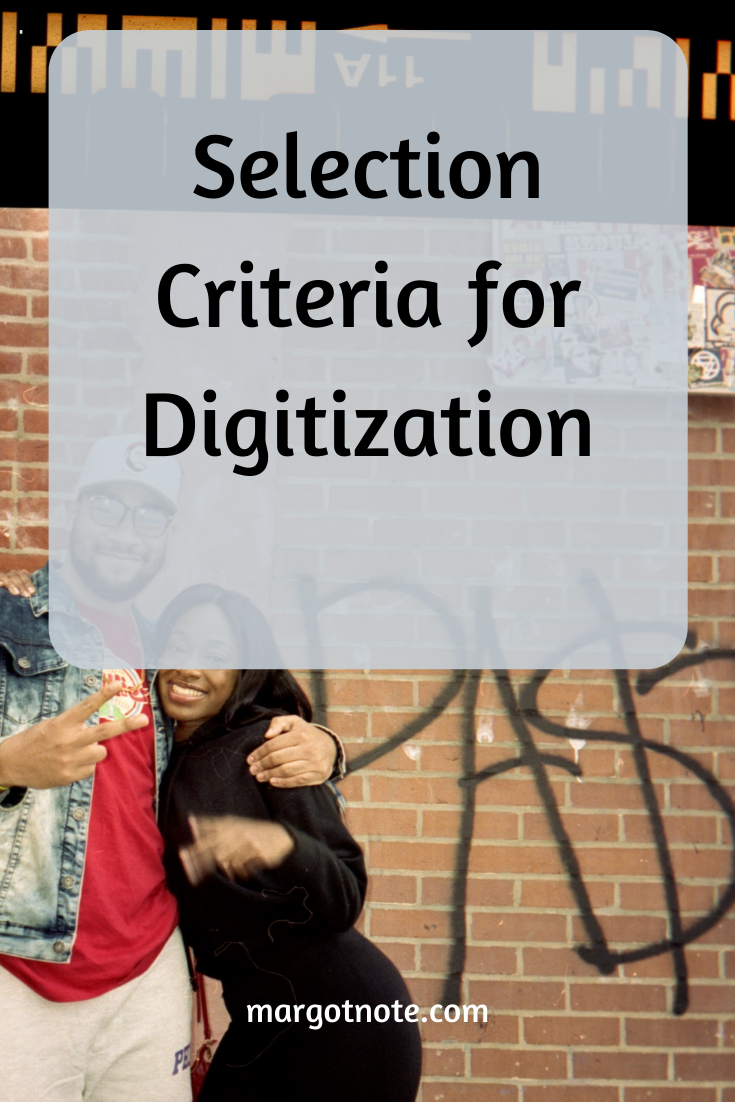As the world continues to be impacted by the coronavirus pandemic, archival repositories have made more materials available online. Projects to digitize materials began years ago, but since online access is now the only access for many organizations, there has been a renewed interest in making holdings available virtually.
The pandemic pushed organizations to find ways to make their collections more accessible, which often means investing in broader digitization efforts.
Since digitizing everything is unrealistic and expensive, archivists use selection criteria for digitization. In choosing wisely, organizations focus on facets of their collections that are best suited to digitization, make effective use of technology, and meet researchers’ needs. Digitization policies and plans allow institutions to articulate how they will use digitization to support their missions and build consensus about what criteria will guide the choice of projects and the programs’ growth. Archivists build online collections that provide the most research value, sustainable over time. Below are some selection considerations, organized in order of importance.
Copyright
Projects suitable for digitization must have their copyright cleared before proceeding. Collections with copyright owned by the institution, produced by the institution, or in the public domain should receive priority treatment above collections that lack copyright permissions or have unclear copyright agreements. There is no point in an organization spending time, money, and talent to digitize something they cannot post.
Information Needs
Candidates for digitization should meet constituencies’ information needs, who increasingly demand digitized archival and special collections materials for better access. The judgment used for collection development can also evaluate the intellectual quality of items or collections to digitize. Since the cost of digitization projects is so high, the work must focus on digitizing the most useful and unique materials that meet users’ information needs, rather than the long tail of lesser used, less popular, or derivative materials.
Use
If the collections have a high frequency of demand because they meet user information needs, they may qualify for digitization. Suppose visitors have always accessed a physical collection, but items are no longer available because the reading room is closed. In that case, the materials after digitization may be even more useful for remote users.
Value
Organizations should digitize high-value items for preservation and security. Value is gauged monetarily, by the uniqueness of the material, and its importance to the community served by the institution. The interests of funding agencies or grant providers can also assess value. Archivists should query their stakeholders as to what collections are the most valuable to the organization.
Preservation
Items or collections that have preservation problems because of inadequate housing, physical damage, fragility, size, or outdated formats also qualify for digitization. An added benefit is that providing alternative access to the information decreases the handling of original materials, facilitating preservation.
Costs
If physical materials are costly to retrieve, then suitable digital versions may be more cost-effective. Digital access can save money because it reduces the need for employees to supply retrieval services.
Processed Collections
Collections that are already organized, described, and processed with proper metadata, should be given higher priority than unprocessed collections. In most cases (although not always), processed collections signify that they meet the above criteria for information needs, use, and value. Since the information is already there, digitization is just one more step to increased accessibility.
Wise Decisions
No repository can digitize everything it owns. Thoughtful decisions arise from assessing the nature and content of materials, their intellectual property rights, and the requirements for items that provide the users’ need for access to the content and the institution’s need to preserve materials of enduring value. Selection works best within a matrix of priorities for digitization.
The blog was originally published on Lucidea's blog.
Get Started
Looking for archival advising, records management, and historical research services? Click below to speak with an expert consultant.































